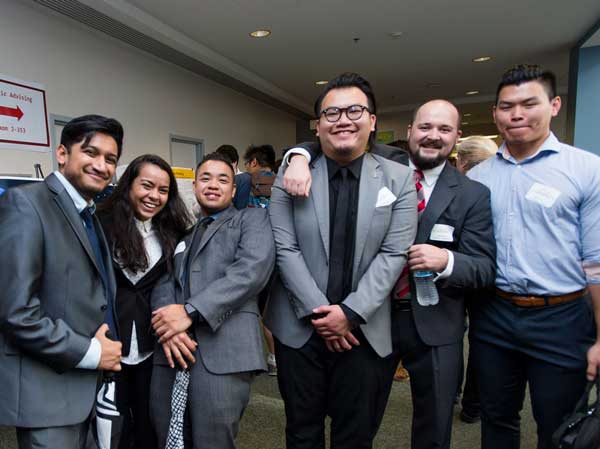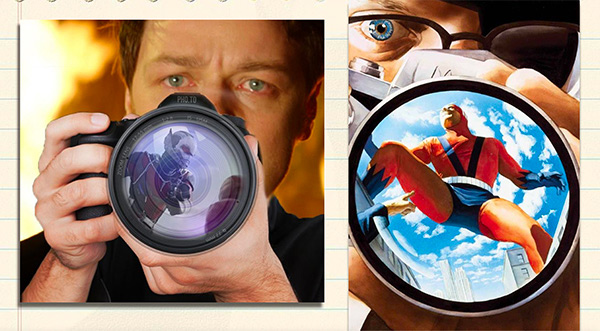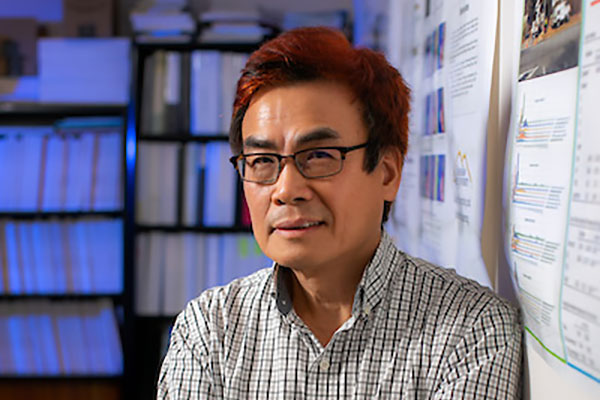
Hands-on Engineering
KENNESAW, Ga. | Oct 13, 2017

She blinked once and the Emotiv EPOC+ electroencephalogram (EEG) headset she wore detected brain activity and signaled to a nearby laptop, causing the drone to rise off the ground. She looked left and the drone floated left. She looked right and the drone once again followed. Then, without warning, it jolted upward and clipped the second-floor railing before plummeting back down to the lobby floor.
As Rego and her classmates rushed to diagnose the problem, Sarah North, who teaches computer science in Kennesaw State’s College of Computing and Software Engineering, watched and smiled. It was the first time her students could diagnose a user interface problem on an actual technologically advanced device rather than doing it theoretically using paper, pen and computers.
With a recent $10,000 investment, the College of Computing and Software Engineering has been able to purchase six cutting edge, technologically advanced devices to give students hands-on learning experience through trial and error. In addition to the Emotiv EPOC+ headset, students now have access to Microsoft HoloLens, HTC Vive virtual reality system, a 360-degree camera and two Parrot drones.
“If you don’t fail then how can you learn,” North said. “For many years, I taught the course without this kind of technology and it crippled the whole concept of hands-on learning. It is good to have an imagination, but when you can’t work hands-on then it’s hard to move forward with development. They’ve never had this experience before.”
North’s course is a comprehensive study of techniques in the design and implementation of user interface engineering and focuses heavily on researching the way humans interact with technology. It has 92 enrollees – 42 of whom are in-class while the remaining are online. All the students participate in a semester-long research project exploring the newly available devices. The project, North said, is designed to familiarize the students with the project management life cycle, an integral part of graphical user interface (GUI) and application development.
Students are divided into six groups, each assigned a device and research focus. Rego’s team, for

Students spent the opening weeks of the fall class researching their respective devices and how humans have used them to solve world problems. They are encouraged to think of new uses for the technology. One group is exploring how a quadcopter can be programmed to mimic techniques used by cinematographers. Another group is finding a more efficient way for users to navigate a virtual environment using the HTC Vive.
In addition to the research, the students have been asked to implement what they have learned by developing a user interface of their own, with many choosing to craft mobile applications for handheld Android devices. They will submit their research papers to peer-reviewed journals at the end of the semester. North said a handful of students will continue developing their applications after the class ends.
North said she motivates her students to spend time engaging with the equipment since it is unlikely that they will have a chance to experiment with the devices outside of the classroom setting.
The professor’s approach was a major draw for Tyler Crawley, a senior computer science major.
“Having these resources is huge. It gives (students) tools they wouldn’t be able to access on their own,” said Crawley, whose project explores the evolution of augmented reality. His team is currently looking for ways to integrate their own designs into the HoloLens, an augmented reality device that enables users to interact holograms in a physical environment. The team recently uploaded onto the HoloLens a giant owl avatar that can be seen standing in front of the user when the device is worn.
“I’m such a project-based learner,” said Crawley, who would like to pursue a career in applications development. “That’s one of the biggest reasons I chose to study computer science; I wanted to be able to learn a skill and to be able to do projects instead of focusing on memorization and tests. I haven’t dipped my toe into the industry yet, but I definitely feel like the hands-on approach will be applicable later.”
Written by Travis Highfield
Photography by David Caselli
Video by Rob Witzel


















